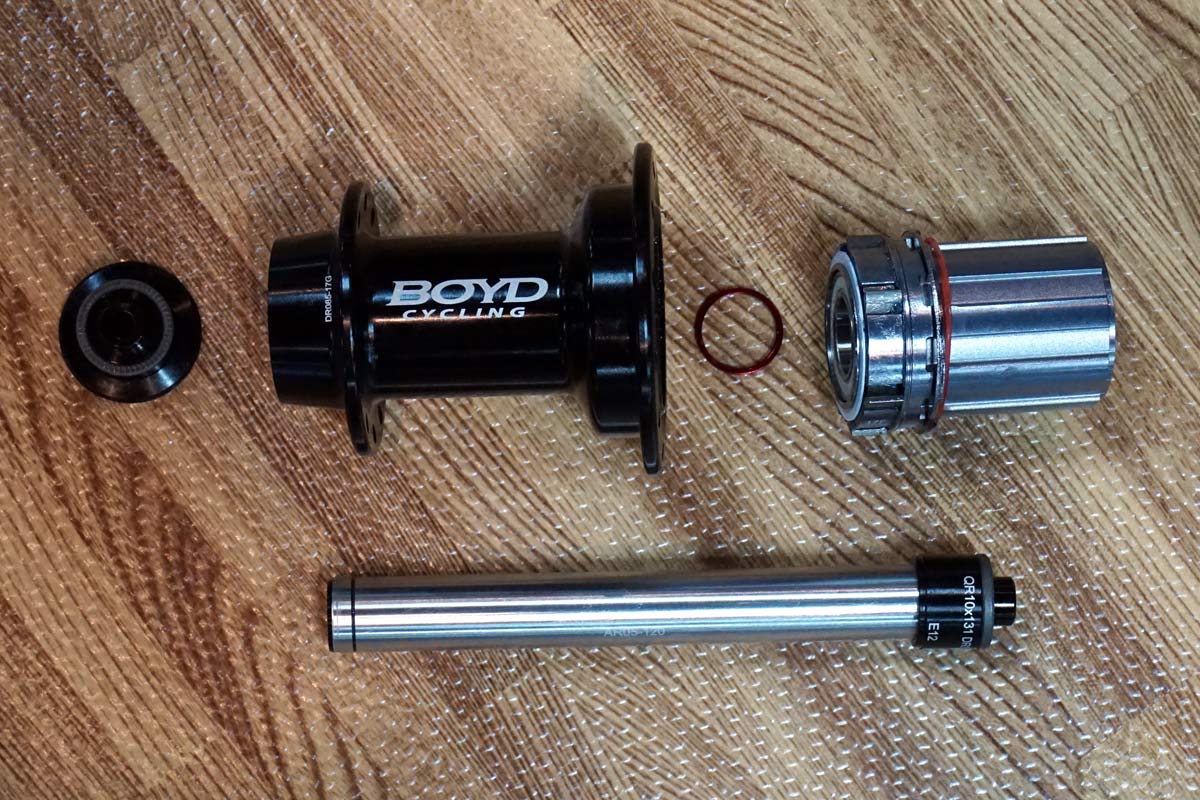The new Boyd Cycling 85 Hubs build on the development work they’d put into their Eternity Hubs to launch a premium road bike hub for rim brake wheel builds. The idea was to create an ultra stiff axle and bearing setup that pushed the flanges as wide as possible for a better racing angle. The Eternity Hub’s dual axle system proved too difficult to manufacture at the tolerances needed for it to work properly. So he went back to the drawing board.
The 85 Hubs are named for Interstate 85 that runs past their Greenville, SC, headquarters (and a brewery there, too). On the front, the bearings and flanges are pushed as wide as possible, which is easier because you don’t neeed to work around the cassette. Out back, Boyd found that eeking every last millimeter out of the flange spacing was a more effective way to improve bracing angle than creating an oversized driveside flange. As such, his is only marginally larger than the non-drive side, but managed to add a full millimeter more space than than normal by increasing the hub shell to 131mm instead of 130mm.
FRONT HUB MEASUREMENTS:
- Center of hub to center of flanges – 39.0mm
- Flange spoke hole diameter – 36.5mm
- Claimed weight: 95g
REAR HUB MEASUREMENTS:
- Drive side spoke hole diameter – 55.5mm
- Center of hub to center of drive side flange – 17.3mm
- Non-drive side spoke hole diameter – 44.5mm
- Center of hub to center of non-drive side flange – 37.7mm
- Claimed weight: 254g
The result is a wheel that can be built with NON- driveside tension at about 49% of of drive tension (UPDATED to correct the drive vs non-drive tension statement), which founder Boyd Johnson says should be plenty to make the wheel very strong and stiff. Helping out are larger, premium Revo Cream bearings packed with Mobil grease, which Boyd says adds about 5g, but drastically improves durability. Using larger bearings also made room for a larger axle, which makes the hubs thru-axle ready. No, there aren’t a lot of thru axle RIM brake road bikes now, but they’re coming because you get the same improvements in stiffness here as with disc brakes, and, you know, incremental gains.
The freehub body is fitted with six pawls, three of which are engaged with the ratchet 32 teeth at any time, yielding tight 5.6° engagement. It’s the same FH body and system used in their Quest disc brake hubs. These new hubs will be availabe on all Boyd road wheels with rim brake rims, or get them for $75 (front) and $150 (rear).
This summer, Boyd introduced his bubblegum scented pink tubeless tire sealant, and now he’s got a setup kit to go with it. The blue keychain is a dual sided valve core remover that works for both Presta and Schrader. The syringe helps you get the sealant into the tire without breaking the tires seat, and his valve stems now come in black or silver.





